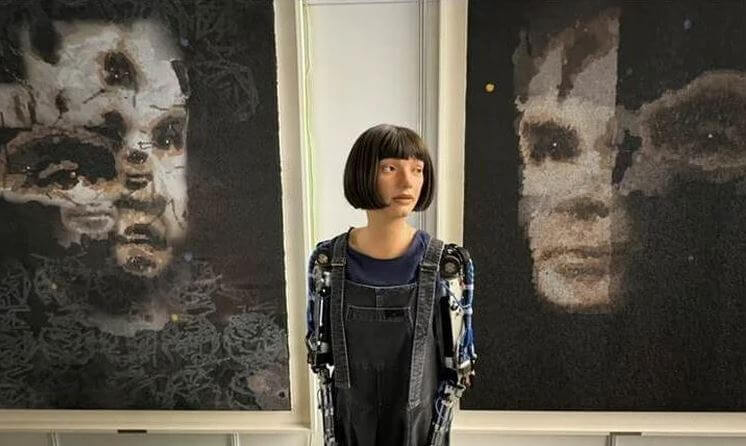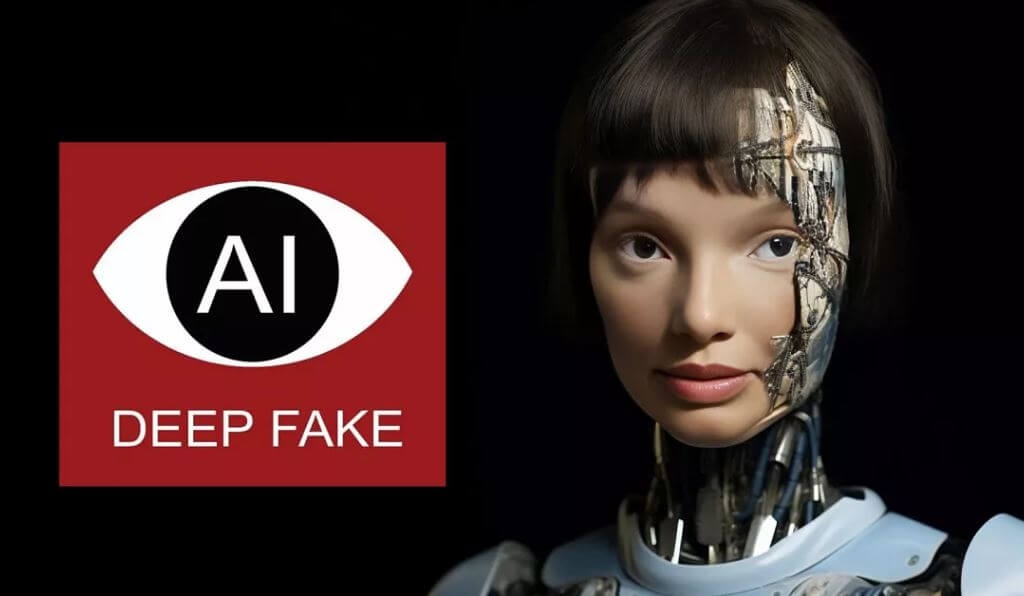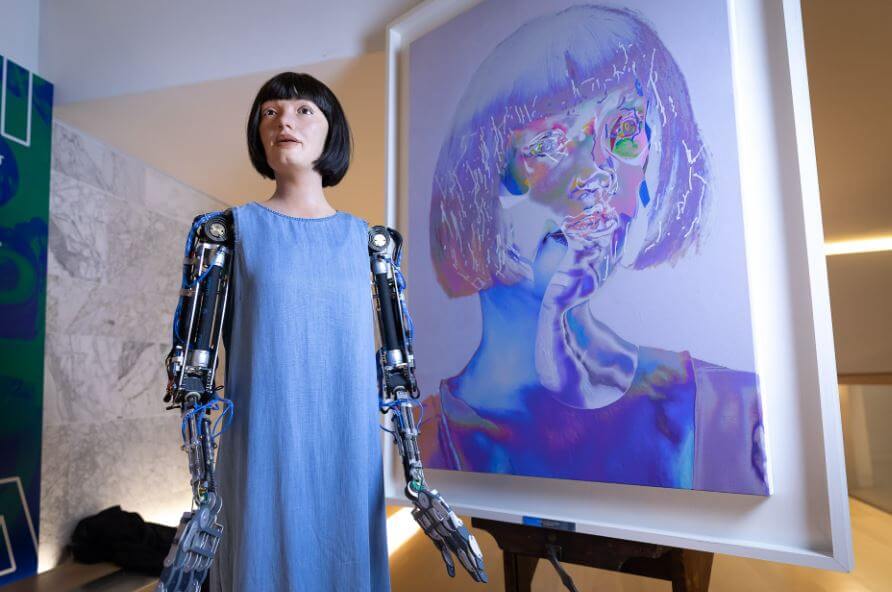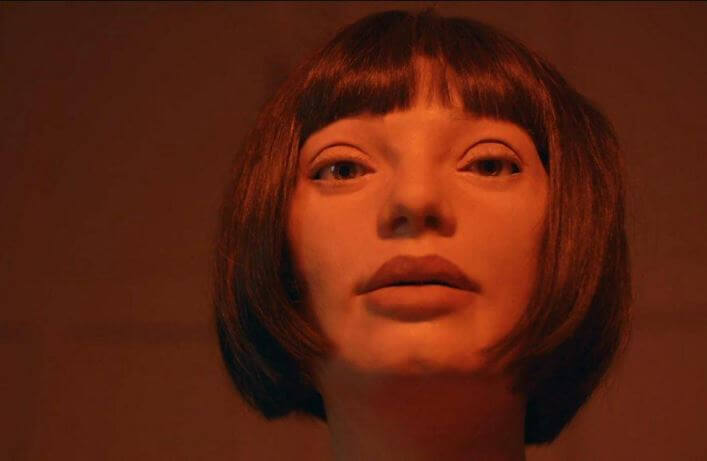When it comes to entertainment and art, the world has seen its First Artist Robot named Ai-Da who was appreciated for she can paint new and different artwork. Ai-Da is recognized as an artist robot; her artistic work was made with an AI robot, and such creations became a subject of discussions concerning creativity, human singularity, and AI development in creative industries. In this article, let’s examine more what Ai-Da and her experience are, what she contributed to the art sector, and rather intriguing questions and responses about her.
Who is Ai-Da, the World First Artist Robot?
Ai-Da created in 2019 and referred to as the first Artist Robot, and more importantly, it is the first one in the whole world. They named after Ada Lovelace who was a mathematician and arguably the first technical computer scientist. Ai-Da created in collaboration with engineers at Oxford in association with artificial intelligence and art curator Aidan Meller. This robot an artistic copy of human skill but trained to perform the act of developing Art and with higher-order algorithms to create Art.
Ai-Da adopted with a realistic human-like appearance and most distinctively developed eye area as well as human imitation robotic arm for human motion. Ai-Da’s arm enables her to sketch, draw, and even paint introducing a brand-new perspective to the artistic bilateralism between humans and machines.
How Ai-Da Creates Art with Artificial Intelligence
Ai-Da’s work produced by multiple stages featuring machine learning, image recognition, and fine coding skills. Cameras in them captured what she wanted and filtered her subjects’ images through algorithms to detect patterns, shapes, and details. These algorithms let Ai-Da understand the world around it and convert the data she receives visually into her aesthetics.

This humanoid can mechanically capture on paper the view she has with her mechanical arm by painting portraits, or paintings of beautiful scenery and abstract art. As much as realism, Ai-Da has a venture into abstract art and other forms of artistry too. This ability has turned her into the icon of new AI art and challenges society and culture how a machine can recreate creativity.
The Creative Mind vs. Artificial Intelligence
The emergence of artificial intelligence has led to some arguments as to whether actual intelligence, as a form of creativity can be real. In the past, creativity attributed to emotions, experiences, and individual thoughts that are unique to a human being. Still, there is no consciousness in Ai-Da, and all that she produces is programmed and coded instead of inspired and feeling.
There is, therefore, a diversity of opinion among art critics and scholars as to the matter. Most critics see Ai-Da’s works as mere imitations programmed by the artist, while others think she embodies a novel kind of artistry. This debate presented an analysis of what extent creativity attributed to a human mind or creativity in artificial intelligence that is learned through training from large datasets. Therefore, with the future advancement of Ai-Da, there becomes hard-hitting evidence that AI artwork does not differ from that of human creativity to make the argument hold water.
Ai-Da’s Impact on the Art World
After her debut, Ai-Da has appeared in galleries and exhibitions all over the world provoking debate within the art world. Some people attracted to her work, and some people are afraid of what she is doing to the local artists. Ai-Da is now a known figure, even though no human models accurately depicted by her creations; her pieces can seen in the Tate Modern and the Design Museum in London.

Ai-Da is the best thing that could ever happen to the art world. Some consider her s ambassador of technology while others look at her as a rival to human artists. The idea of robots being able to replace artists has become more real as her arts get public recognition and large groups of people visit her art pieces. The audience interested in art loves to see her create elaborate pieces, and this curiosity has brought a new focus on the part that technology plays in art.
Ethical Concerns Surrounding AI in Art
This is an achievement that has also awakened ethical concerns within the artistic society in general. Such critics have claimed that incorporating AI in creative industries as we have seen with our sample might diminish the worth of talent. If machines such as Ai-Da can produce such elaborate art, what does that say for artists, and art in general moving forward? This has led many artists to believe that robots are likely to turn them to the side of the market, and there are discussions on the validity of robot-generated artworks.
A second ethical issue is ownership. Who owns the painting if Ai-Da does one, this company, or does Ai-Da own the painting? Any such issues have helped in generating a discussion about intellectual property rights concerning artificial intelligence and AI ethics. Luo and Fan state that Ai-Da is not supposed to become an art competitor to real people but serves as a thought experiment. However, she says that her popularity has raised debates about the future of robotic art in the creative economy.
The Future of Human and AI Collaboration in Art
Ai-Da’s journey has opened doors to a future where humans and AI might work together on creative projects. This possibility of collaboration can lead to new forms of artistic expression and innovation. Many believe that, instead of replacing human artists, AI could serve as an assistive tool, offering new techniques and styles that artists might not have considered.

In the future, artists may use AI-driven tools to explore forms of art beyond traditional methods. AI algorithms can analyze vast amounts of data, generating fresh perspectives and assisting artists in developing complex pieces. This partnership between humans and artificial intelligence could enhance both creative freedom and efficiency, allowing artists to focus on conceptual ideas while AI handles technical execution.
Conclusion
The arrival of AI has transformed discussions around AI in the art world, showing how artificial intelligence could redefine traditional roles. While Ai-Da the First Artist Robot may not possess emotions or personal experiences, her artistic capabilities and exhibitions are challenging long-standing assumptions about creativity and human uniqueness. Her story encourages society to consider what it means to be creative and how AI technology might influence that understanding in the future. These competitors set to revolutionize the fine art world, as the experiment with Ai-Da shows that this is just the start. It is a fine line between art all created by human beings and art that includes even a certain amount of computer programming as is the case with Ai-Da. Hence, with future technological development in Robotics and artificial intelligence, even more, artificial intelligence needed or implemented in the creative industries.
Ai-Da is the world first robot artist, created with AI to produce original art.
Ai-Da uses image recognition and AI algorithms to interpret visuals, creating artistic pieces.
The work of Ai-Da has turned the focus to the subject of AI ethics, and the place of technology in art.
It’s possible, but many believe AI will complement human creativity rather than replace it.
Issues include ownership, intellectual property, and whether robot-created art holds value.
